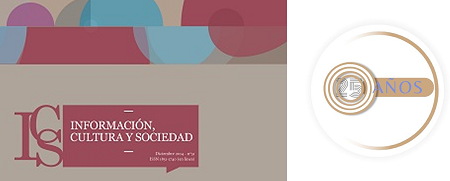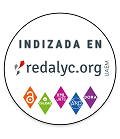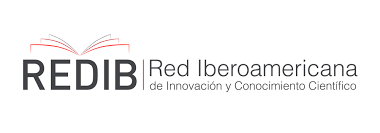Systemic digital preservation. A methodological proposal based on the documentation of experiences in Colombia
Abstract
Systemic digital preservation represents an archival and strategic approach necessary for its comprehensive understanding and to ensure the continuity of digital heritage, access and availability of electronic records and digital objects in the long term. The digital preservation methodological proposal presented here is based on the systematization of consulting and advisory experiences developed by the Information Science Research Center (CICINF) of the Inter-American School of Librarianship of the University of Antioquia (Medellin, Colombia). This systematization presents the consulting methodology, under a qualitative approach, which is characterized by the interaction between university-sector-state, interdisciplinary work, theoretical support, evaluation and estimation of proposals according to the institutional contexts. Some of the results frame the importance of the diagnosis, policy, plan, projects, program and processes of digital preservation and the need to document the practices, as this is a specialized subject that requires an adequate level of depth in relation to the social contexts and technologies that are constantly changing and transforming. ARK CAICYT: http://id.caicyt.gov.ar/ark:/s18511740/ekvxcqotoDownloads
References
Archivo General de la Nación. 2014. Archivo General de la Nación – Normativa Acuerdo 006 de 2014. <http://www.archivogeneral.gov.co/politica/repositorio-normatividad> [Consulta: 20 septiembre 2023].
Archivo General de la Nación. 2018. Fundamentos de preservación digital a largo plazo. <https://www.archivogeneral.gov.co/sites/default/files/Estructura_Web/5_Consulte/Recursos/Publicacionees/FundamentosPreservacionLargoPlazo.pdf> [Consulta: 20 septiembre 2023].
Archivo General de la Nación. 2021. Guía para la elaboración e implementación del plan de preservación digital. <https://www.archivogeneral.gov.co/sites/default/files/Estructura_Web/5_Consulte/Recursos/Publicacionees/2022/GuiaPlanPreservacionDigital.pdf> [Consulta: 20 septiembre 2023].
Cruz Mundet, José Ramón y Carmen Díez Carrera. 2016. Sistema de Información Archivo Abierto (OAIS): luces y sombras de un modelo de referencia. En Revista Investigación Bibliotecológica: archivonomía, bibliotecología e información. Vol. 30, no. 70, 221-247. <https://www.scielo.org.mx/pdf/ib/v30n70/0187-358X-ib-30-70-00221.pdf> [Consulta: 20 septiembre 2023].
International Organization for Standardization. 2018. Space data and information transfer systems — Open archival information system (OAIS) — Reference model (ISO 14721:2018).
Flores, Daniel. 2020. La Cadena de Custodia de Archivos Digitales – CCDA combinada con Preservación Digital Sistémica – PDS para Archivos. <https://bit.ly/3ChUwKP> [Consulta: 20 septiembre 2023].
Sáenz-Giraldo, Andrés. 2019. La preservación digital en Colombia: un análisis desde la perspectiva normativa. En Revista Interamericana de Bibliotecología. Vol. 42, no. 1, 87-97. <https://doi.org/10.17533/udea.rib.v42n1a09>
Serra Serra, Jordi. 2008. Los documentos electrónicos: qué son y cómo se tratan. Gijón: Ediciones Trea, S.L.
Térmens, Miquel. 2013. Preservación digital. Barcelona: Editorial UOC. (El profesional de la información).
Universidad de Antioquia. Escuela Interamericana de Bibliotecología. 2023. <https://udea.edu.co/wps/portal/udea/web/inicio/unidades-academicas/interamericana-bibliotecologia/investigacion/centro-investigacion> [Consulta: 20 septiembre 2023].
Authors publishing in this journal acknowledge the conditions below:
- Authors retain the copyright of their work while they transfer the right of the first publishing to the journal, under the Creative Commons Attribution-ShareAlike 4.0 International (CC BY-SA 4.0) Licence, which allows third parties to reproduce them under the condition that express mention is given to the author and to its original publication in the journal.
- Authors may enter into other contractual and independent arrangements for the non-exclusive distribution of the version of the article published in this journal (for instance, it can be published in an institutional repository or in a book). In any case, an express mention should be given to its first publication in the journal.
- It is permitted and encouraged to publish online the articles (for example, on institutional or personal pages).


























